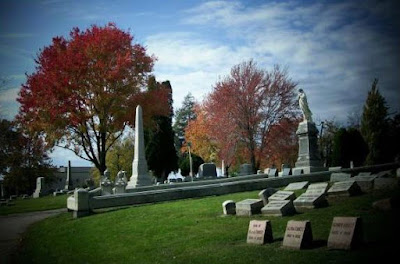The homes of August and Jacob Kuebeler were pictured in the 1894 publication, Art Work of Huron and Erie Counties. Built in 1885, the residence of August Kuebeler was at 1319 Tiffin Avenue, and is still standing. Jacob Kuebeler had an almost identical home built across the street at 1318 Tiffin Avenue. It no longer stands. Dick’s Carry Out is now at this location.
You can see the location of the Kuebeler brothers’ homes in an early 20th century Sanborn Insurance Map:
 |
| The Kuebeler homes are in pink, roughly facing each other |
Before 1915, the addresses were 909 and 910 Tiffin Avenue. The former Kuebeler homes were built in the Eastlake architectural style. Each home was three stories high, constructed from brick, with decorative trim around the windows.
The brothers were prominent in the brewing industry in Sandusky, Ohio. The Kuebeler brewery was established in 1867.
The Kuebeler brewing plant was on Tiffin Avenue near Broadway on Sandusky’s west side. (You can see the proximity of the plant to the men's homes in the map above.) It was built in 1893 after the previous plant had been destroyed by fire. In 1896 the Kuebeler and Stang breweries merged. Two years later the Kuebeler-Stang brewery became part of the Cleveland Sandusky Brewing Company. Most of the Sandusky breweries closed during Prohibition, but one of the former Kuebeler-Stang plants manufactured soft drinks into the mid 1930s.
For several years the former home of August Kuebeler housed the Erie County Detention facility. Longtime city commissioner George Mylander was a direct descendant of Jacob Kuebeler.

 this blog
this blog



































